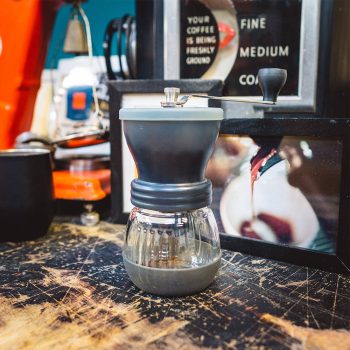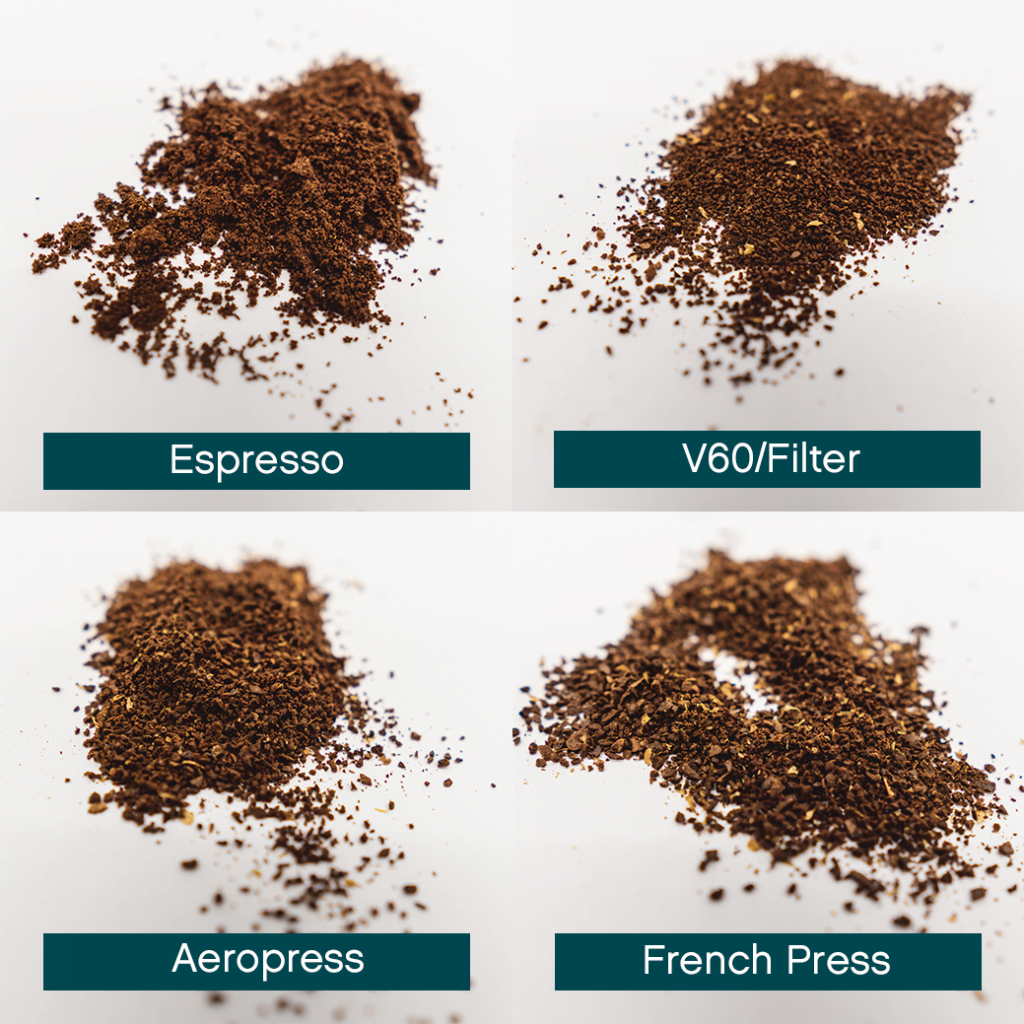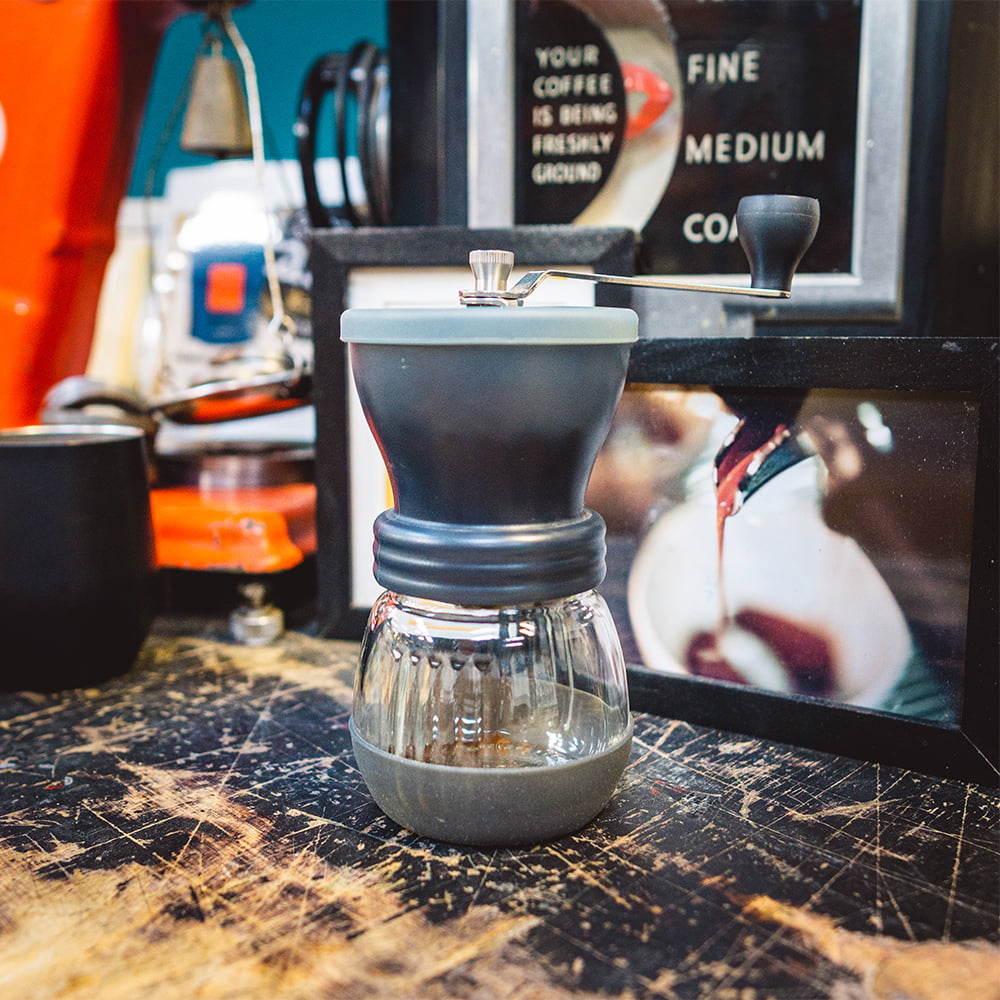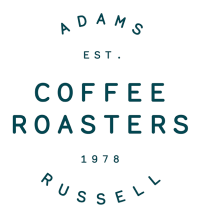
With the coffee culture continually on the rise, more and more of us have begun buying from local roasters and are choosing to make coffee at home.
Buying fresh coffee and mastering your brew method is a great place to start, but fully understanding grind size and why it’s important can generate fantastic, consistent coffee.
Do you want to learn how to control extraction and create the perfect brew time after time? Keep reading to become a home barista maestro and make consistent coffee with any brew method.
Coffee grind size is one of the trickier components of coffee making and is one that vastly affect the freshness and overall flavour of your coffee. With many variations and methods, this post aims to explore all areas related to coffee grinding and leave you feeling like a caffeine expert.
Why does a coffee grinder and grind size matter?
Grind size, refers to how large each individual grain of coffee is. The image below outlines the grind size for some popular brew methods, notice how large the difference between some of these can be.
The typical range of grind sizes goes from the French-press (most coarse), to espresso (most fine).
Grind size is important because the size of coffee has to be compatible with the conditions inside each brew method or it will not taste or look right. These conditions include time, temperature and filter size.
I have chosen to include some examples to explain this further.
What Grind Size for Cafetiere
A cafetiere involves steeping coffee and water (similar to how we make tea) for around 5-8 minutes before plunging a metal filter through it. This method requires a coarse grind size (see image) in order for the coffee to extract within 5 minutes without making the coffee look cloudy.
If we decided to use a finer grind it will appear sludgy and unpleasant as the tiny pieces of coffee would pass through the mesh filter and go into your cup.
What Grind Size for Drip Method or Pour Over Coffee including Aeropress
A drip coffee made with a V60 or another pour over device requires a much finer grind than a cafetiere.
With this method you are relying on gravity to force the water through the bed of coffee suspended above your cup. If the grind is too coarse the water would be able to navigate through the large gaps between each particle and won’t be in contact with the coffee enough for it to extract.
Alternatively, a grind size too small will result in all the tiny particles clogging up the holes in the filter paper, which will cause the coffee to over extract.
Here is an example of four brew methods requiring different grind sizes for different reasons.

Ultimately, extraction is the underlying outcome we are trying to control by changing grind size and that is why it is so important.
Under extracted coffee will taste sour and weak whilst over extracted coffee tastes bitter and hollow, this is what we are trying to avoid. Perfect extracted coffee tastes sweet, full bodied and balanced,
What to do if your coffee doesn’t taste right
If your coffee tastes weak, sour or bitter then a couple of tweaks here and there should result in a much nicer tasting brew. Here is a little trouble-shooting equation to remember when trying to find the right grind size…
Under extracted = too coarse
Too fine = over extracted.
It is important to note that grind size isn’t everything and that you should follow the recommended water temperature and brew for your chosen brew method.

Grind size for different brew methods
After already explaining cafetiere and dripper grind, check out the list of the correct grind sizes for the various brew methods.
| Grind Size | Brew Method |
| Extra Coarse | Cold Brew |
| Coarse | Cafetiere, Cupping |
| Medium/Coarse | Chemex, Clever Dripper |
| Medium | Aeropress, Siphon, Pour-over, V60 |
| Medium/Fine | Pour-over, V60, Aeropress, Stove Top |
| Fine | Espresso |
| Extra Fine | Turkish coffee maker |
When should you grind coffee?
Coffee gets its glorious flavour from oils.
Many compounds develop, change in a continuous process during the roasting stage and it is our job as baristas to convert that oil into flavour. As soon as the bean becomes broken, the oils begin to evaporate depending on the conditions (moisture, humidity, temperature to name a few).
Therefore, you can already lose a lot of potential flavour if coffee is ground for a long time before you make a brew.
In addition, the finer the grind size the more surface area is exposed which will increase how much oil is lost. It is always the better idea to grind as your kettle is boiling, this way you can ensure that all the oils are having a chance at extracting and entering the coffee cup.
Buying ground coffee from your local roaster shouldn’t put you off however, although grinding it yourself may be better for flavour but it isn’t always practical depending what grinder you have.
Most roasters seal their coffee in foil bags that have a one-way valve to keep in the fresh aroma.
What should ground coffee look like?
This may seem like an unusual question, but not all grinders work in the same way or produce the same results.
Like with many aspects of coffee, consistency is key when it comes to grinding.
Getting the right grind size is important, but ensuring that each particle is uniform is difficult if the grinder isn’t up to par.
Blade grinders chop the coffee with a single blade where a fine grind is only possible by grinding for a long time. This creates a varied grind size throughout and will result in under and over extracted coffee within the same brew – not to mention all the sediment at the bottom which isn’t desirable.
The more preferred option is a burr grinder. The gaps between the two blades stay consistent and so does the consistency of the grind size.
Should you require any assistance when buying a grinder or if you would like more information about coffee grinding. Feel free to contact Adams + Russell on our email address.

